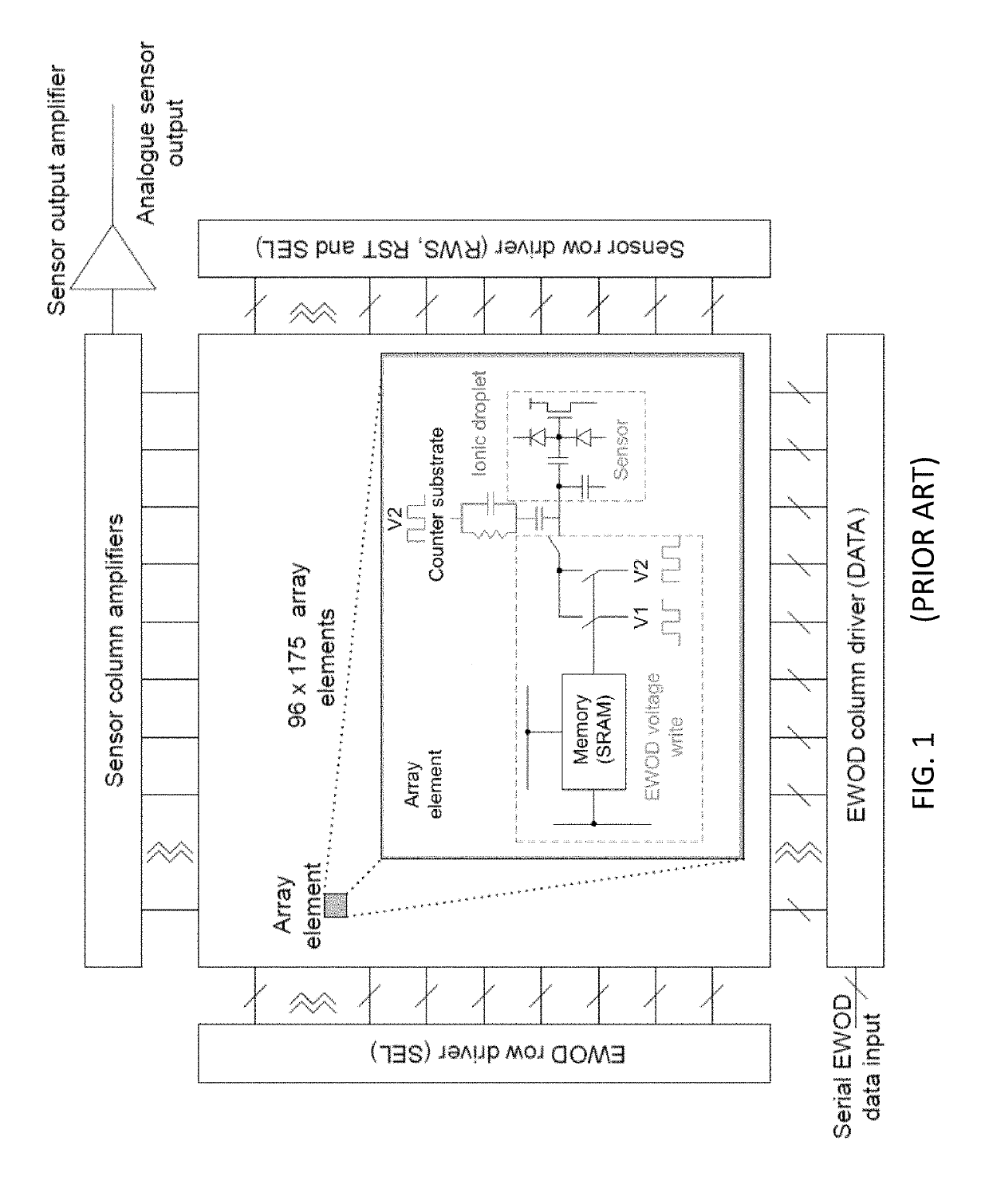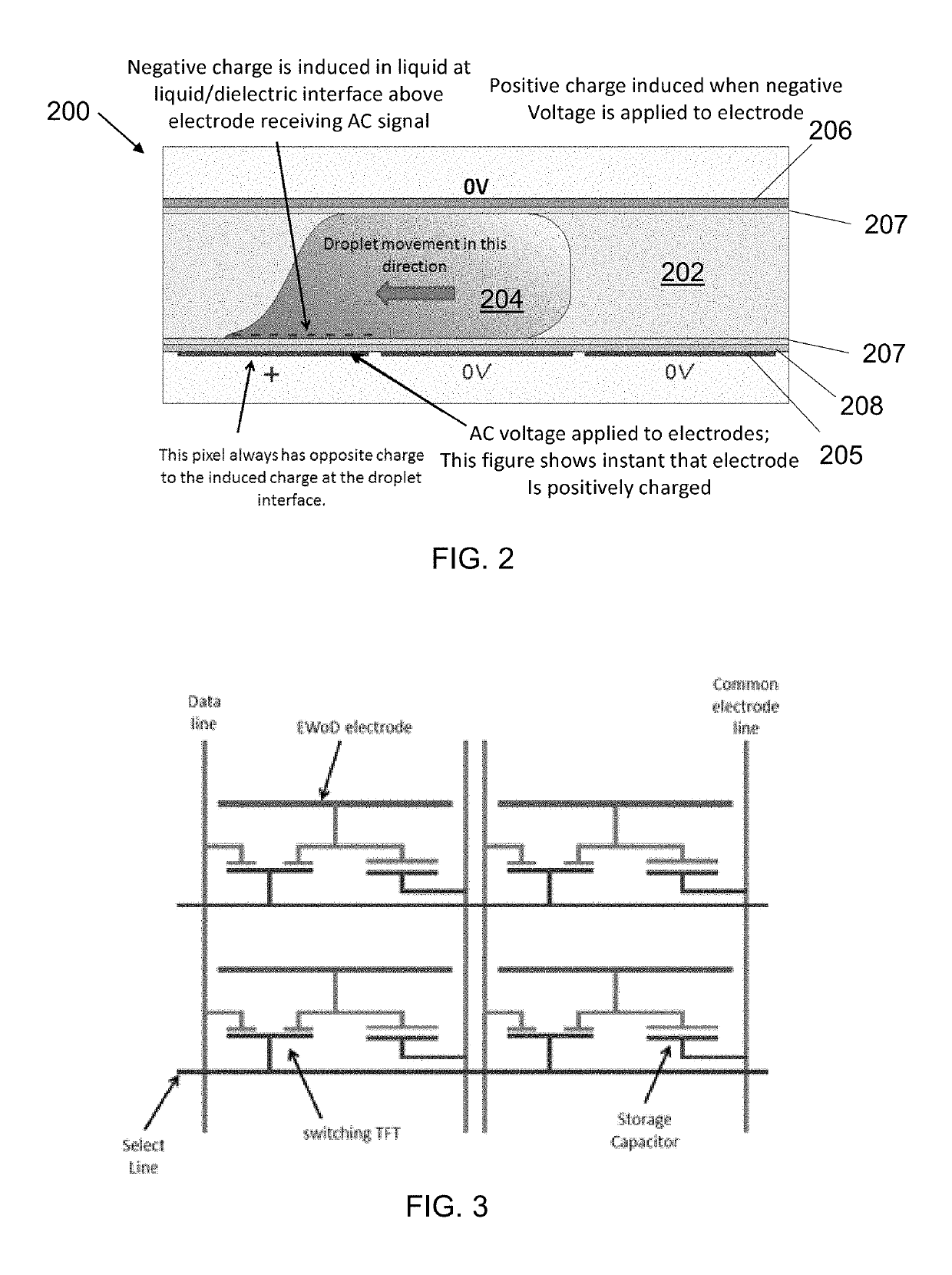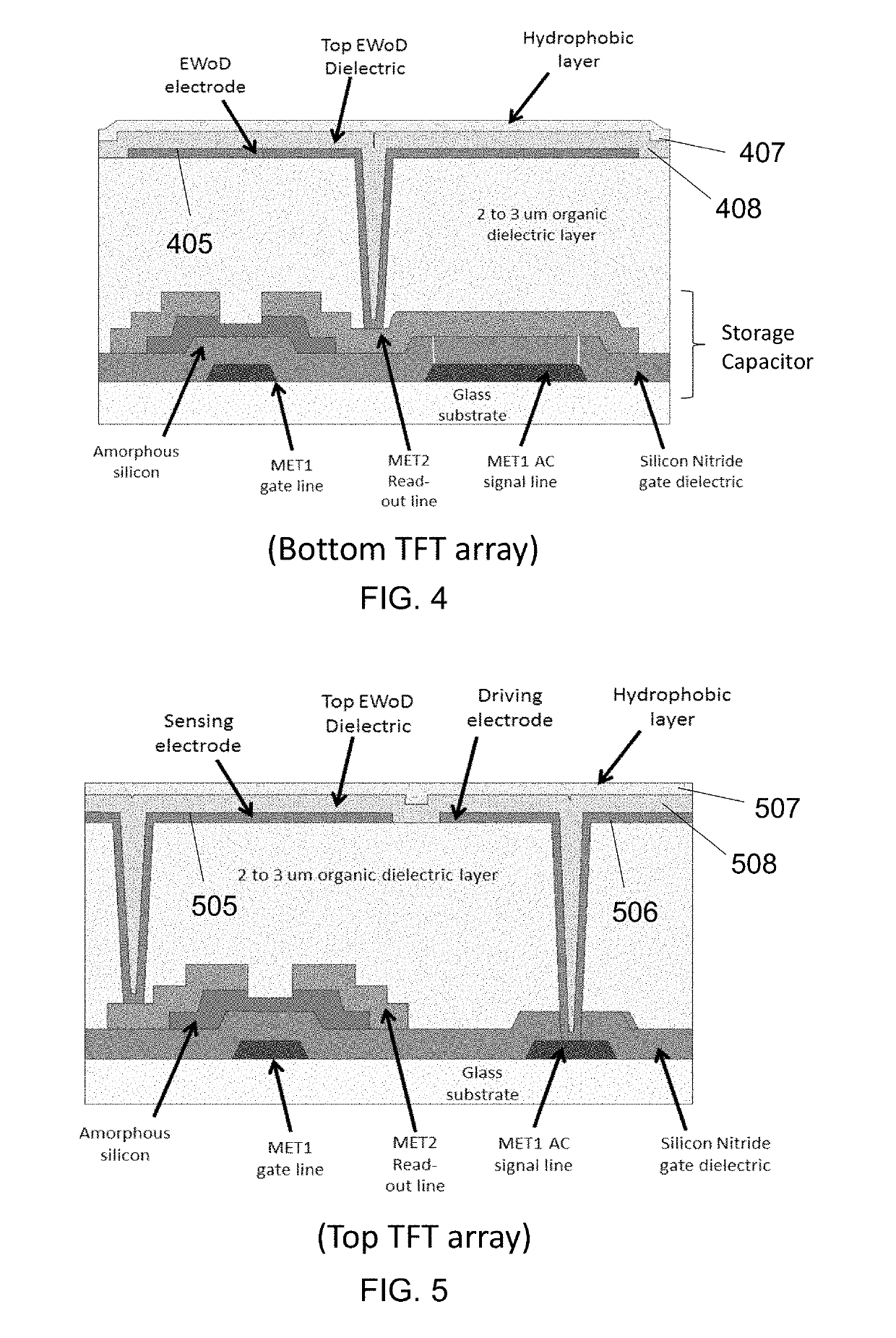Digital microfluidic devices including dual substrates with thin-film transistors and capacitive sensing
a microfluidic device and capacitive sensing technology, applied in static indicating devices, laboratory glassware, instruments, etc., can solve the problems of inability to perform mass parallel assays, reactions, etc., in passive matrix devices, polysilicon fabrication is substantially more expensive than amorphous silicon fabrication, and achieves the effect of simplifying the fabrication of a device and simplifying the data handling associated
- Summary
- Abstract
- Description
- Claims
- Application Information
AI Technical Summary
Benefits of technology
Problems solved by technology
Method used
Image
Examples
Embodiment Construction
[0021]As indicated above, the present invention provides an active matrix electrowetting on dielectric (AM-EWoD) device including dual substrates with thin-film transistors (TFT) and capacitive sensing. As depicted herein the “bottom” substrate includes a plurality of electrodes to propel various droplets through a microfluidic region. The “top” substrate includes a plurality of electrodes to provide a signal and to detect the presence and / or size and / or composition of a droplet with capacitive sensing. The use of “top” and “bottom” is merely a convention as the locations of the two substrates can be switched, and the devices can be oriented in a variety of ways, for example, the top and bottom plates can be roughly parallel while the overall device is oriented so that the substrates are normal to a work surface (as opposed to parallel to the work surface as shown in the figures). The top or the bottom substrate may include additional functionality, such as resistive heating and / or ...
PUM
 Login to View More
Login to View More Abstract
Description
Claims
Application Information
 Login to View More
Login to View More - R&D
- Intellectual Property
- Life Sciences
- Materials
- Tech Scout
- Unparalleled Data Quality
- Higher Quality Content
- 60% Fewer Hallucinations
Browse by: Latest US Patents, China's latest patents, Technical Efficacy Thesaurus, Application Domain, Technology Topic, Popular Technical Reports.
© 2025 PatSnap. All rights reserved.Legal|Privacy policy|Modern Slavery Act Transparency Statement|Sitemap|About US| Contact US: help@patsnap.com



